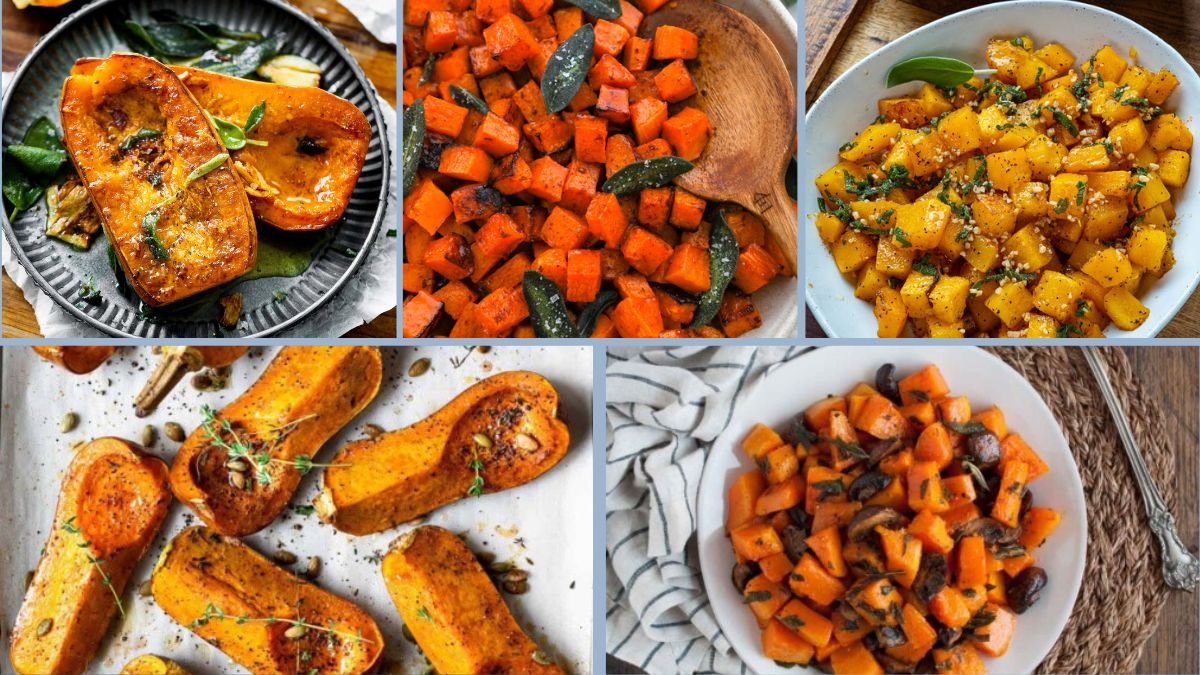Autumn brings a bounty of colorful vegetables, among which butternut squash stands out for its sweet, nutty flavor, smooth texture, and nutritional richness. When roasted and paired with aromatic sage and brown butter, this humble winter squash transforms into a sophisticated, flavorful dish that embodies the essence of seasonal cooking. This article explores the preparation, nutritional benefits, culinary versatility, and tips for creating the perfect roasted butternut squash with sage and brown butter, making it an ideal addition to any vegetarian menu.
The Appeal of Roasted Butternut Squash
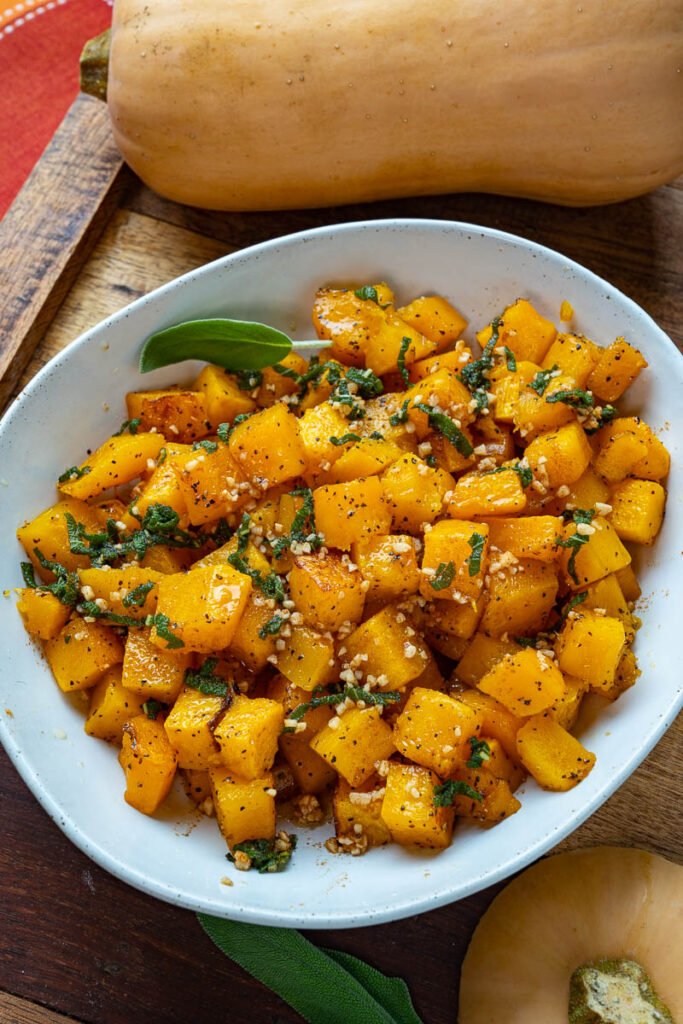
Butternut squash, a member of the winter squash family, is celebrated for its vibrant orange flesh, natural sweetness, and creamy texture. Roasting brings out its inherent sugars, resulting in a slightly caramelized exterior and a tender interior. When combined with sage—a fragrant herb often associated with fall—and nutty brown butter, the squash becomes a delicately balanced dish: earthy, sweet, and aromatic.
Roasting is a simple yet transformative cooking method. It requires minimal ingredients, intensifies flavors, and preserves the nutritional integrity of the squash. This makes roasted butternut squash with sage and brown butter not only delicious but also nutrient-dense and visually appealing, ideal for both casual meals and festive occasions.
Nutritional Benefits of Butternut Squash

Butternut squash is highly nutritious, offering a range of health benefits:
- Beta-carotene: Converts to vitamin A in the body, supporting eye health, immune function, and skin integrity.
- Dietary fiber: Promotes healthy digestion, stabilizes blood sugar levels, and contributes to satiety.
- Vitamin C: Supports immune function and antioxidant activity.
- Potassium: Helps regulate blood pressure and maintain cardiovascular health.
- Magnesium: Supports muscle function and energy metabolism.
The combination with sage and butter (or plant-based alternatives) enhances flavor while contributing small amounts of healthy fats, which improve absorption of fat-soluble vitamins. Sage itself contains antioxidants, anti-inflammatory compounds, and aromatic oils that complement the squash’s sweetness and elevate the dish’s sensory appeal.
Ingredients for Roasted Butternut Squash with Sage and Brown Butter
This recipe relies on simple, high-quality ingredients:
- 1 medium butternut squash, peeled, seeded, and cut into 1-inch cubes
- 3 tablespoons unsalted butter (or plant-based butter)
- 6–8 fresh sage leaves, chopped
- 1–2 tablespoons olive oil
- Salt and freshly ground black pepper, to taste
- Optional: a drizzle of maple syrup or honey for extra sweetness
- Optional garnish: toasted pumpkin seeds or chopped walnuts
These ingredients allow the natural flavors of the squash to shine, while sage and brown butter provide aromatic depth and a slightly nutty richness.
Step-by-Step Preparation
1. Preheat the Oven
Preheat your oven to 400°F (200°C). High-temperature roasting ensures even caramelization and a tender interior.
2. Prepare the Squash
Peel and seed the butternut squash, then cut it into uniform cubes to ensure consistent cooking. Smaller cubes will caramelize faster, while larger pieces retain more bite.
3. Toss with Oil and Seasonings
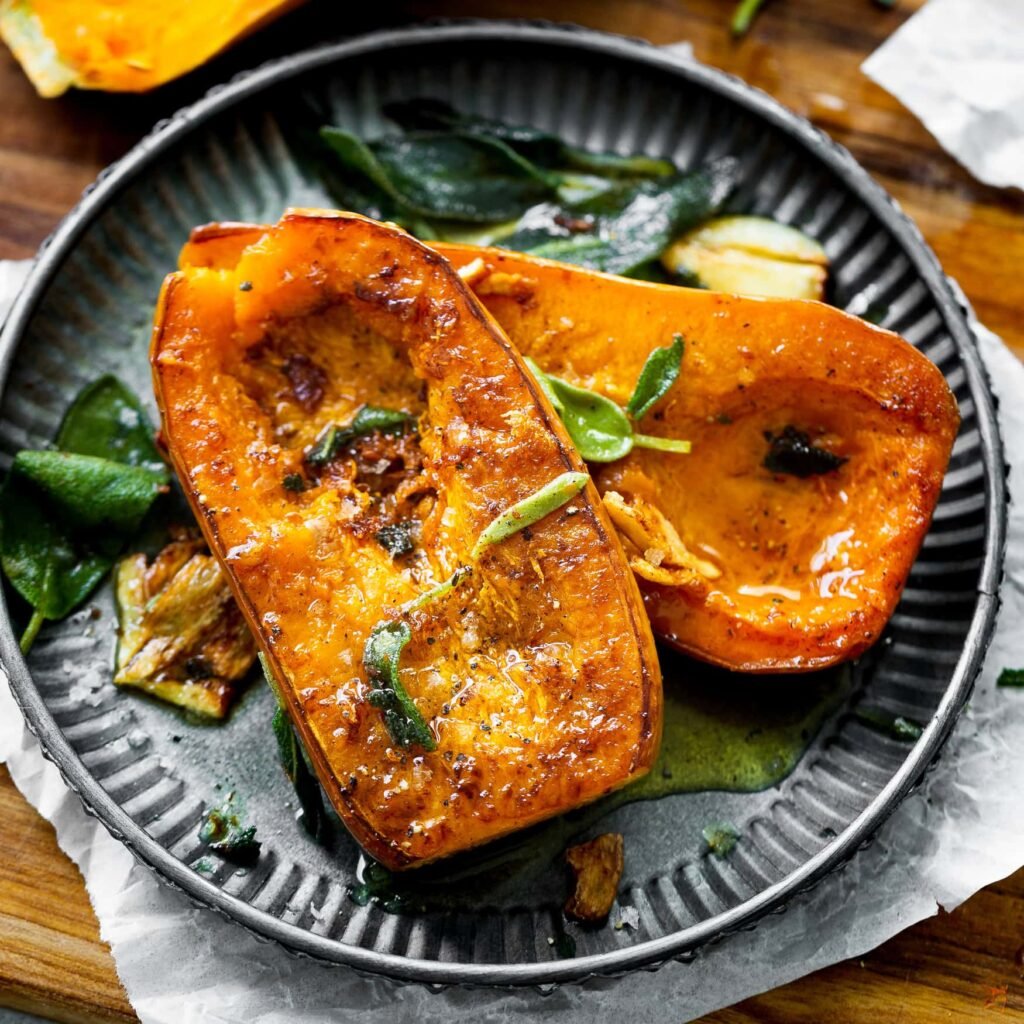
In a large mixing bowl, combine the squash cubes with olive oil, salt, and pepper. Toss thoroughly to coat evenly. This step ensures that seasonings penetrate the squash and promote even browning.
4. Roast the Squash
Spread the seasoned squash on a parchment-lined baking sheet in a single layer. Roast for 25–30 minutes, flipping halfway through, until the squash is tender and slightly caramelized on the edges.
5. Prepare Brown Butter and Sage
While the squash is roasting, melt butter in a small skillet over medium heat. Continue cooking, swirling occasionally, until it turns golden brown and develops a nutty aroma. Add chopped sage leaves and cook for an additional 30 seconds to release their fragrance.
6. Combine and Serve
Once the squash is roasted, transfer it to a serving dish. Drizzle the brown butter and sage mixture over the cubes, tossing gently to coat evenly. Garnish with optional toasted seeds or nuts for texture. Serve warm as a side dish or as part of a roasted vegetable platter.
Tip: For a vegan version, replace butter with plant-based margarine or coconut oil, and the recipe retains its rich, nutty flavor.
Flavor Enhancements and Variations
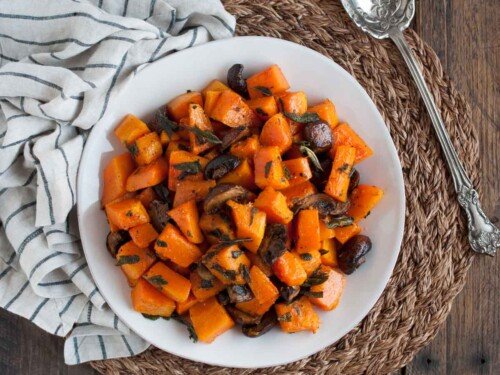
Roasted butternut squash with sage and brown butter is highly versatile. Several modifications can elevate or adapt the dish:
1. Sweet and Savory
Drizzle a small amount of maple syrup or honey over the squash before serving to enhance its natural sweetness.
2. Spiced Variations
Add a pinch of cinnamon, nutmeg, or smoked paprika to the squash before roasting for warm, aromatic notes.
3. Nutty Enhancements
Incorporate toasted pecans, walnuts, or pumpkin seeds to add texture, flavor, and nutritional value.
4. Citrus Brightness
Finish the dish with a squeeze of fresh orange or lemon juice to balance the richness of the butter and enhance the sweetness of the squash.
5. Herb Alternatives
Rosemary or thyme can replace or complement sage, providing a different aromatic profile while maintaining the autumnal essence of the dish.
These variations demonstrate the adaptability of roasted butternut squash to different taste preferences and meal contexts.
Culinary Uses and Pairings
Roasted butternut squash with sage and brown butter can be incorporated into various meals:
- As a side dish: Complements grains, legumes, pasta, and other roasted vegetables.
- In salads: Toss cooled roasted squash into grain-based salads with arugula, quinoa, or farro.
- In soups: Puree roasted squash with vegetable broth for a creamy roasted squash soup.
- In pasta dishes: Combine with whole-grain pasta, sautéed greens, and a drizzle of extra brown butter for a hearty, vegetarian entrée.
- As a snack: Serve warm or chilled, garnished with seeds or nuts, for a nutritious and satisfying snack.
This versatility makes roasted butternut squash a valuable component in vegetarian and plant-based diets, adaptable to casual meals or formal dining occasions.
Tips for Perfect Roasting
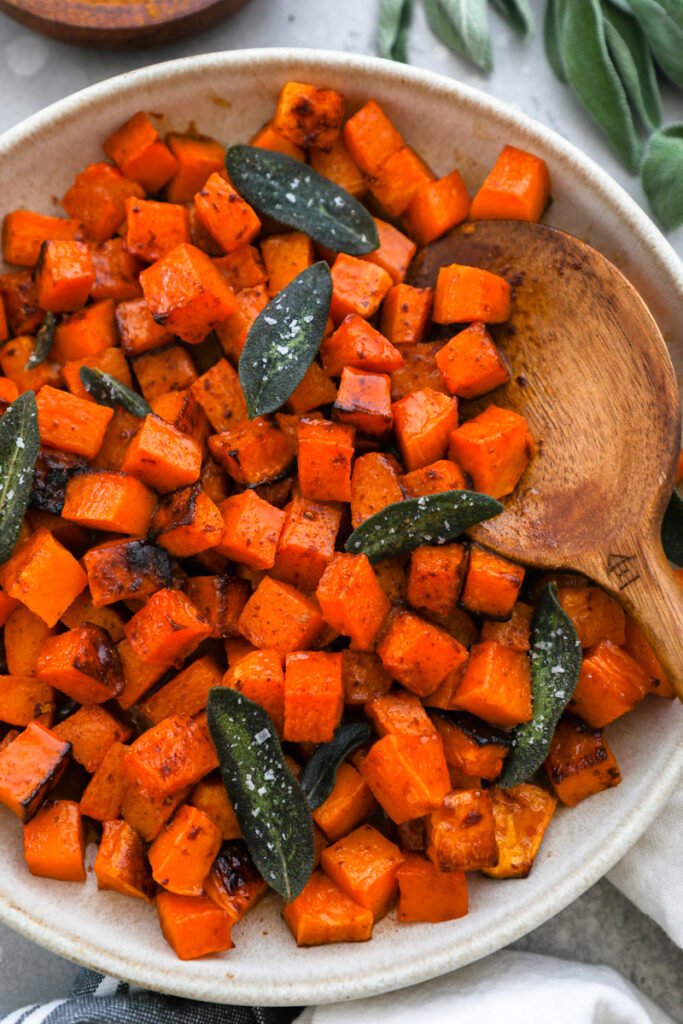
- Uniform Size: Cut squash into similar-sized cubes for even cooking.
- High Heat: Roast at 400°F for caramelization and tender interiors.
- Avoid Crowding: Leave space on the baking sheet to prevent steaming.
- Brown Butter Monitoring: Watch carefully; brown butter can burn quickly if overheated.
- Seasoning Generously: Salt enhances sweetness, while herbs and spices add aromatic depth.
- Mix at the End: Toss squash with brown butter just before serving to retain texture and prevent sogginess.
Nutritional Considerations
Roasted butternut squash with sage and brown butter is nutrient-dense and low in calories:
- Approximately 150–180 calories per serving (1 cup of roasted squash with butter)
- Rich in fiber, vitamins A and C, potassium, and antioxidants
- Healthy fats from butter or plant-based alternatives improve absorption of fat-soluble nutrients
- Minimal added sugar ensures a heart-healthy and diabetic-friendly dish
When paired with whole grains, legumes, or leafy greens, this dish contributes to a balanced, plant-based meal that is both satisfying and nutrient-rich.
Seasonal and Environmental Considerations
Butternut squash is a seasonal, locally available vegetable in autumn and winter. Choosing fresh, locally grown squash reduces environmental impact, supports sustainable agriculture, and ensures maximum flavor and nutrient retention. Roasting is an energy-efficient cooking method, requiring minimal water and preserving nutritional content compared to boiling or steaming. Herbs like sage are also often grown locally or can be cultivated at home, further promoting sustainability and freshness.
Conclusion
Roasted butternut squash with sage and brown butter is a simple yet elegant dish that embodies the essence of fall. The natural sweetness and tender texture of the squash, enhanced by the nutty richness of brown butter and aromatic sage, create a flavor profile that is both comforting and sophisticated.
With minimal ingredients and straightforward preparation, this dish demonstrates how simple techniques can transform humble vegetables into gourmet fare. Its versatility allows it to serve as a side dish, salad component, pasta ingredient, or even a snack, fitting seamlessly into vegetarian and plant-based diets.
By selecting fresh, seasonal produce, high-quality butter (or plant-based alternatives), and aromatic herbs, home cooks can enjoy a nutrient-dense, flavorful, and visually appealing dish that elevates everyday meals or festive gatherings.
From weeknight dinners to holiday feasts, roasted butternut squash with sage and brown butter is a timeless recipe that highlights the richness, versatility, and nutritional value of winter squash. Its combination of flavor, texture, and health benefits makes it an essential addition to any vegetarian kitchen, proving that seasonal vegetables can shine with minimal effort and maximum impact.
